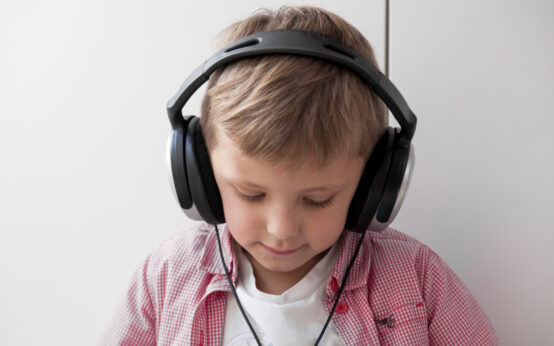Introduction
Distinguishing autistic behavior vs misbehavior in children can pose a challenge. It requires careful observation and recognition of the unique challenges faced by autistic individuals. In this article, we will explore common autistic traits, such as sensory challenges, social communication difficulties, and behavioral patterns, and discuss strategies for addressing these behaviors.
Autistic Behaviors vs. Misbehavior:
1. Sensory Challenges: Autistic individuals often display unique responses to sensory stimuli, such as overreacting or underreacting to sound, light, smells, and touch. For example, a child running away from a grandparent may be reacting to the smell of perfume. Recognizing sensory challenges involves asking, observing, and monitoring consistent behaviors.

2. Social Communication Challenges: Autistic individuals may struggle with social communication, making it challenging to understand and respond appropriately to others’ emotions. It’s important to consider developmental delays, provide direct instruction, and be aware of the child’s intent when assessing social communication difficulties.

3. Behavioral Challenges: Autistic behaviors, like self-stimulation (stimming), lack of eye contact, self-abuse, and attention difficulties, are distinct from intentional misbehaviors. Recognizing these behaviors allows caregivers to respond appropriately and provide necessary support.

Understanding autistic behavior requires empathy, not judgment. It’s a unique language, not misbehavior.
Dr. Stephen Shore
Addressing Autistic Behaviors
Once it’s established that a child’s actions stem from autistic traits, caregivers can take various actions:
- Provide Direct Instruction: Utilize words, video, modeling, and social stories to teach appropriate behavior in specific situations. Repetition and instruction can be crucial for an autistic child’s success.
- Remediate Challenges: Identify and address sensory challenges, such as avoiding strong smells or adjusting environmental factors like lighting and noise levels.
- Choose Settings Carefully: Select environments and activities that align with the child’s sensory preferences. Consider attending autism-friendly events and ensuring instructors understand the needs of autistic children.
- Grow a Thicker Skin: Prioritize the child’s safety and comfort over potential embarrassment. Seeking counseling can help manage emotions in situations that draw attention.
- Change the Situation: In extreme cases, changing schools, neighborhoods, or routines may be necessary if the current environment poses significant challenges for the autistic child.
Addressing Real Misbehavior
While recognizing and addressing autistic behaviors is crucial, caregivers should also set boundaries and respond to genuine misbehavior. Establishing and communicating expectations, recognizing misbehavior, responding clearly, providing consistent consequences, and supporting positive behavior are essential for all children, including those with autism.

Building self-discipline is a key element for fostering independence, resilience, success, and self-confidence. As guardians, your role involves:
- Establishing and communicating clear limits and expectations, ensuring everyone understands acceptable behavior.
- Identifying misbehavior by understanding the unique characteristics and intentions of the child under your care.
- Responding promptly and clearly, articulating why certain behaviors are unacceptable and expressing your feelings about the matter.
- Implementing meaningful and consistent consequences that resonate with the child, reinforcing the connection between actions and outcomes.
- Providing support for behavior improvement, tailored to the child’s needs—whether through earned rewards or immediate positive reinforcement.
- Acknowledging and reinforcing positive behavior, offering specific praise for good actions to encourage continued growth and development.
Conclusion
Understanding autistic behavior vs misbehavior requires patience, observation, and tailored strategies. By recognizing and addressing the unique challenges faced by autistic individuals, caregivers can create supportive environments that foster positive behavior and overall well-being.
Source
- American Psychiatric Association. (2013). Diagnostic and statistical manual of mental disorders (5th ed.). Arlington, VA: American Psychiatric Publishing.
- Shore, S. (2015). Beyond the wall: Personal experiences with autism and Asperger syndrome. Shawnee Mission, KS: AAPC Publishing.
- Koegel, R. L., & Koegel, L. K. (2006). Pivotal response treatments for autism: Communication, social, and academic development. Baltimore, MD: Paul H. Brookes Publishing Co.
- Lang, R., Hancock, T. B., Rispoli, M., & Singh, N. N. (2010). Treatment of challenging behavior in individuals with autism spectrum disorders: Overview and commentary. International Journal of Developmental Disabilities, 56(2), 75–76.
- Lovaas, O. I. (1987). Behavioral treatment and normal educational and intellectual functioning in young autistic children. Journal of Consulting and Clinical Psychology, 55(1), 3–9.
- Rogers, S. J., & Dawson, G. (2010). Early start Denver model for young children with autism: Promoting language, learning, and engagement. New York, NY: Guilford Press.
- Chiang, H. M., & Wineman, I. (2014). Factors associated with quality of life in individuals with autism spectrum disorders: A review of literature. Research in Autism Spectrum Disorders, 8(8), 974–986.







